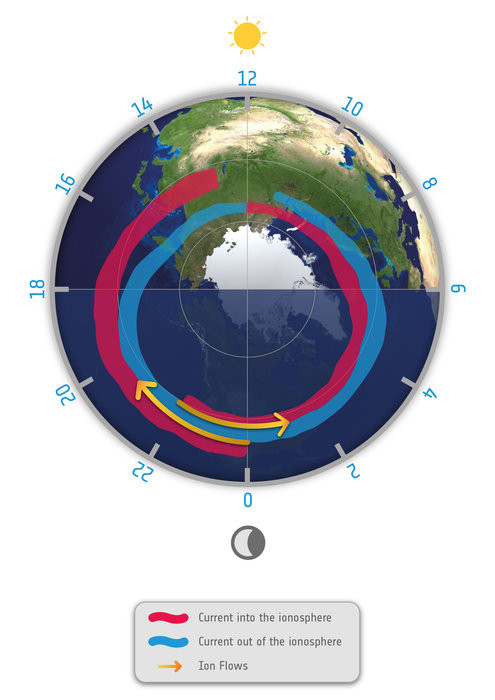10,000C supersonic plasma jets discovered in Earth's atmosphere
Scientists used Swarm satellites to confirm huge electrical fields drive 'Birkeland current boundary flows'.

Supersonic plasma jets that can reach temperatures of up to 10,000C have been discovered in Earth's atmosphere. Canadian scientists used the ESA's Swarm satellites to identify these jets, which have been dubbed Birkeland current boundary flows.
Birkeland currents were first confirmed in the 1970s. Named after Kristian Birkeland, who hypothesised their existence more than 100 years ago, these are huge electric currents being powered by solar winds and guided through the atmosphere by the planet's magnetic field. They carry huge amounts of electric power up to the atmosphere.
Recently, scientists discovered Birkeland currents were also associated with large electric fields that are strongest in the winter. This is when currents moving upwards and downwards connect through the ionosphere.
Using three Swarm satellites, scientists found supersonic plasma jets that reach extreme temperatures. They presented their findings at the Swarm Science Meeting currently taking place in Canada.

Bill Archer, from the University of Calgary, said: "Using data from the Swarm satellites' electric field instruments, we discovered that these strong electric fields drive supersonic plasma jets. The jets, which we call 'Birkeland current boundary flows', mark distinctly the boundary between current sheets moving in opposite directions and lead to extreme conditions in the upper atmosphere.
"They can drive the ionosphere to temperatures approaching 10,000C and change its chemical composition. They also cause the ionosphere to flow upwards to higher altitudes where additional energisation can lead to loss of atmospheric material to space."
David Knudsen, also from the University of Calgary, added: "These recent findings from Swarm add knowledge of electric potential, and therefore voltage, to our understanding of the Birkeland current circuit, perhaps the most widely recognised organising feature of the coupled magnetosphere–ionosphere system."
© Copyright IBTimes 2025. All rights reserved.






















